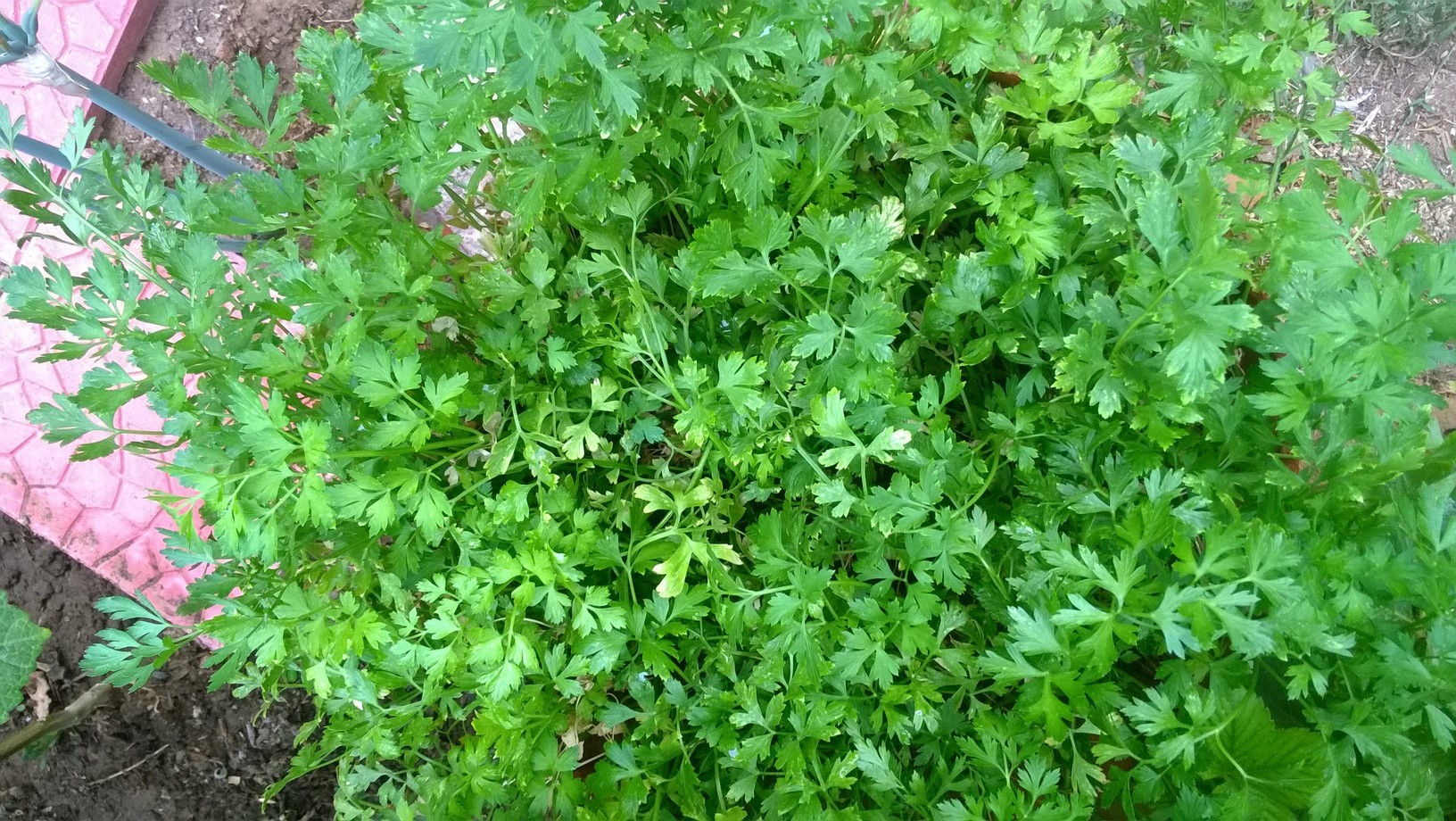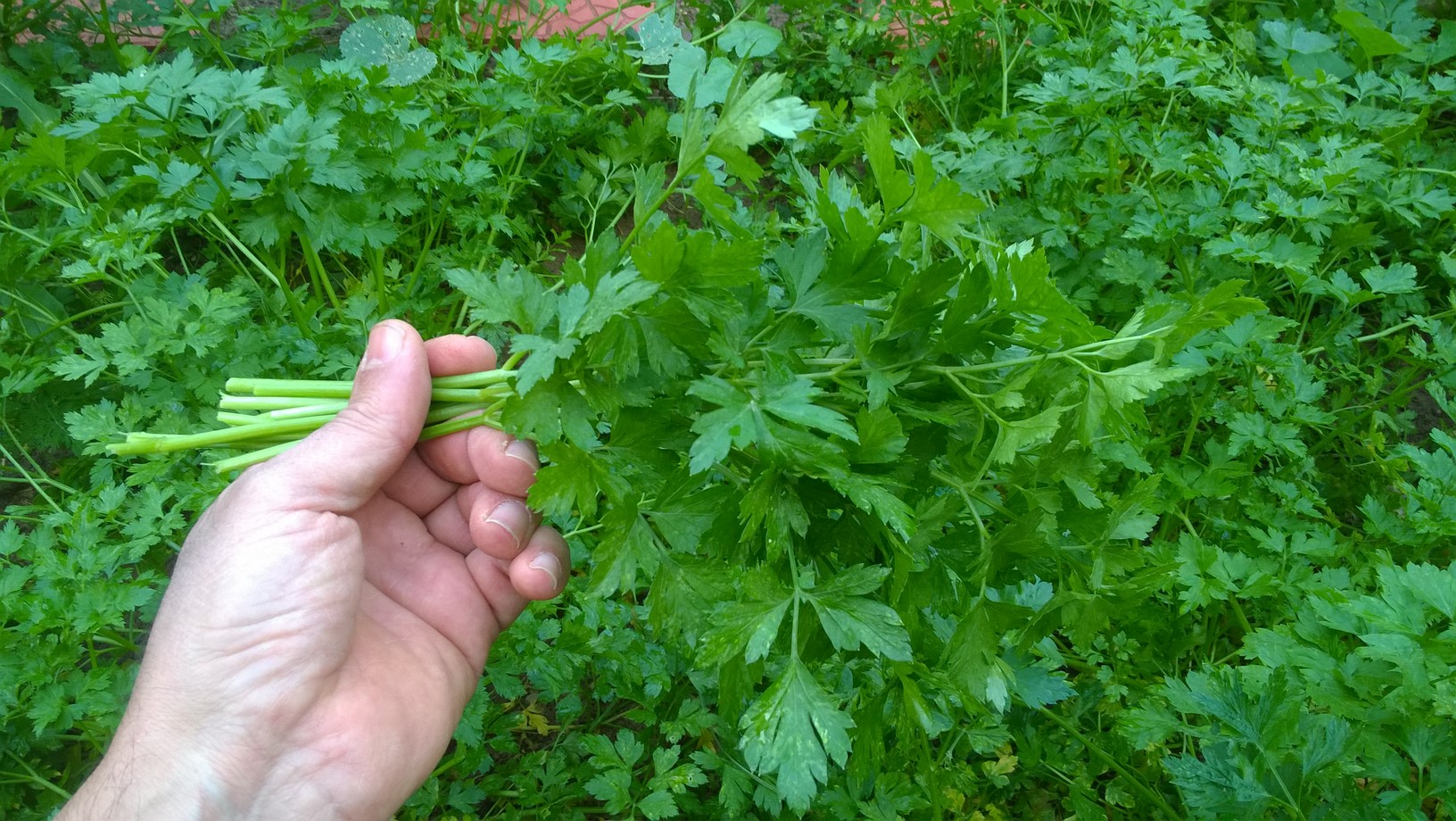History of Parsley
Parsley (Petroselinum crispum) is a hardy herb grown for its flavor, which is added to many dishes, as well as its use as a decorative garnish. Parsley is one of the most popular herbs used in cooking . Parsley is one of the most used in the kitchen and best known aromatic herbs. Native to the Mediterranean region of Southern Europe. While it has been cultivated for more than 2,000 years, parsley was used medicinally prior to being consumed as a food. Some historians credit Charles the Great, the Holy Roman Emperor, for making this herb so popular because he had it gown all over his property. The ancient Greeks held parsley to be sacred, using it to not only adorn victors of athletic contests, but also for decorating the tombs of the deceased. The practice of using parsley as a garnish actually has a long history that can be traced back to the civilization of the ancient Romans.{tocify} $title={Table of Contents}
Plant Description
Parsley is an aromatic herb growing to about a 1 ft (0.3 m) tall and twice as wide. Parsley is a plant with bright green, during the first year, it forms a rosette of tri-pinnate leaves 10-25cm long with numerous 1-3cm leaflets, and a taproot used as a food store over the winter. In the second year it grows a flowering stem to 75cm tall with sparser leaves and flat-topped 3-10cm diameter umbels with numerous 2mm diameter yellow to yellowish-green flowers.
Flat-Leaf Parsley (Neapolitanum) , also known as “Italian Parsley” is distinguishable by its flat leaves, and is known for having a robust flavor. This variety is ideal for flavoring. Italian parsley is sometimes mistaken for cilantro, and they look similar. But Italian parsley has darker, shinier leaves than cilantro ,which also known as( coriander ), cilantro leaves are more delicate and fragrant .
Petroselinum crispum is aptly named for the clean, fresh, crispy taste of the tightly bunched, bright green leaves. Curled parsley is less heat tolerant than flat Italian parsley. It’s not unusual for curled parsley plants to experience slow growth in the heat of summer,Curly leaf and flat- leaf. Both can be used for the same purposes although flat- leaf parsley has a stronger flavour and tends to be favoured in Mediterranean cooking. Both types of parsley contain the same flavoring ingredients. One is a compound called {menthatriene}, which gives parsley its unique flavor. The others is {phellandrene}, these are found in many other herbs as well, lending fresh and woody notes to their flavors. Not only is it the perfect garnish, but also it is healthy,this herb is rich in iron and vitamins A and C. Parsley grows well in any garden or pot, as it doesn’t have strict growing conditions under which it thrives. Just choose an area that gets at least partial sunlight, either in its own plot or between other garden plants it is very easy. Parsley can take a few weeks to germinate, this is because it needs quite high temperatures. This herb tolerates poor soil and drainage, it’s always preferable to situate plants in organic rich, well drained soil when growing parsley. This easy-care herb requires little maintenance, other than occasional watering or weeding, once established. This is a common herb because it has proved so adaptable to all climates. The ultimate taste of parsley is quite dependent on the soil and climate conditions.
Parsley Varieties
Also known as petroselinum crispum, this is another widely grown type of parsley which is used for seasoning and garnishing foods. This herb is also known for its production of essential oil. Curly leaved parsley is used as a garnish on different dishes.
This is the least common type of parsley. Hamburg root parsley is mainly cultivated for its thicker roots, rather than the leaves. This parsley is very common in Eastern and Central European cuisine.
Prepare the soil in your garden by digging it over and incorporating plenty of rich, organic matter such as chicken manure or homemade compost. Just remember that all animal manures must be well rotted before adding to the soil or the concentration of nitrogen will scorch young plants. Parsley grows best in loamy soil with good drainage and moderate soil fertility. It does best in a cool and sunny area, although it will tolerate some light shade.
Parsley Seeds
As i grow Parsley all the year round i always have my own seeds but you have to find good quality of Parsley seeds online or you can also purchase parsley seeds from HERE
Parsley seed growing should be done in well-draining soil that is fairly rich in organic matter with a pH of between 6.0 and 7.0. Parsley seed growing is an easy process, but it requires some patience! Although the seed is not easy to germinate, sow seeds in Feb/Mar for summer/autumn and again in late July for winter/spring, though if left to run to seed, self-seeding is possible.
To speed the germination , soak parsley seeds overnight before sowing them.
Watch: How to Sow Parsley Seeds
Germination is so slow. It can take a full month or two before some seeds sprout.
Thin the seedlings when they are 2-3 inches tall, spaced 10-12 inches apart. Keep the plants consistently moist as they continue to grow, watering once a week. To help retain moisture and retard weed growth, mulch around the plants.
Fertilizing Parsley Plants
Parsley plants like to be fed on a regular basis throughout the growing season. I mix my organic fertilizer into the soil around the plants a few times during the summer. I also feed my parsley plants with my organic chicken liquid fertilizer during the summer. Chicken manure is the highest in nitrogen, and while we do need nitrogen in the garden, this type of animal waste is so {hot} that it will burn your younger plants or seedlings if used fresh. Compost it for at least six months before using, making sure to turn the pile on a regular basis. Or make chicken manure {tea},by adding some dry, aged chicken manure to a bucket of water and let it sit for a day or two, stirring occasionally. Strain out the droppings, then pour the tea around the bases of your plants. This is particularly good fertilizer for leafy greens, which need extra nitrogen to help them grow a steady supply of new leaves to replace all the harvested ones.
Water your parsley deeply at least once a week to encourage the development of a long taproot. You may need to water more frequently during extremely hot and dry periods.
Growing Parsley In Container
- Fill 8cm / 3in wide pots nearly to the top with standard multi-purpose potting compost and place the pots in a shallow container of water. Allow the compost to absorb the water until the top of the compost is damp. This can take up to an hour or so depending on how dry the compost is.
- Choose a warm place in the house, somewhere between 70°F / 21°C to 80°F / 27°C during the day, a bit cooler during the night is OK, and place the pots there for 24 hours to warm the compost in the pots.
- Sow seeds on the surface of the compost and then cover them with a thin layer of compost, just enough to keep the light out and surround them with moist compost. Parsley seeds need a constant supply of moisture.
- To conserve moisture, cover the top of the pots with a plastic bag or loose cling film. Place them in a warm position and wait for the seeds to germinate. This can take between five days and up to three weeks.
- When seeds germinate and shoots appear on the surface of the compost remove the plastic bag after that place the pots in a light and airy position out of direct sunlight!
How to harvest Parsley
When the parsley sprouts out with sets of three leaves that are fully developed, it is ready to be picked. Harvest the parsley slowly throughout the season by cutting the outer stalks of the plants just above ground level to encourage additional growth. The harvesting cycle for parsley is a little different, since it is a biennial. The first year, harvest parsley for its leaves, choosing stalks furthest out from the plant's center. Leave the inner stalks and leaves, so the plant can keep growing. The second year, the leaves will be sparse and may be less flavor-intense. You may use them, but you may also let the parsley bloom. Bees love the blossoms. Collect the seeds to sow the following spring.
Parsley Companion Planting
Growing herbs together can promote the health and growth of your garden. Some plants can help to deter insects from their plant companions, provide them with rich soil and even enhance the flavour of their garden buddies. Be wary though, not all herbs can flourish when planted together. Lettuce and mint don’t make good neighbors with parsley and should be kept far away from it. Parsley is a great companion crop, encouraging the growth of plenty of plants around it. Parsley excels at repelling harmful insects and attracting beneficial ones. Beetles dislike parsley leaves and will avoid it, an effect that can be extended by sprinkling nearby crops with parsley leaves or a tea brewed from them. If you let your parsley flower and go to seed, it will attract predatory wasps and hoverflies that will kill caterpillars and other garden predators. Plant tomatoes near parsley, as the herb attracts wasps that kill the tomato hornworm. Parsley planted near rose bushes will actually make your roses more fragrant.
Get started today and enjoy the benefits of growing this wonderful herb.
If you have any tips for growing organic parsley, we'd love to hear them - please share them in the comments section below.Affiliate Disclosure!
This website is a participant in the Amazon Services LLC Associates Program, an affiliate advertising program designed to provide a means for sites to earn advertising fees by advertising and linking to Amazon. Some of the links to products on this site are affiliate links. These are products that I've used or recommend based from homesteading experience. I do make a small commission (at no extra cost to you) from these sales. {alertInfo}














